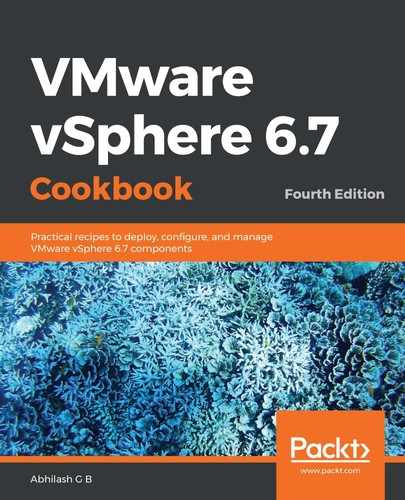A vSphere Distributed Switch (dvSwitch or vDS) is the second type of software switching construct that can be used in a vSphere environment. Unlike a vSphere Standard Switch (vSS), which needs to be managed on a per-host basis, the vDS is managed at the vCenter layer. This, however, doesn't change the way ESXi handles network I/O.
A vDS is often misconceived as a single virtual switch spanning multiple ESXi hosts. One of the reasons for this misconception is that it is commonly documented as a data center-wide vSwitch. In essence, it is only the management plane of the vDS that creates this illusion. VMware still uses an individual data plane (hidden virtual switches) on each ESXi host. It is called a distributed switch since the management plane and the data planes that are distributed on the ESXi hosts are treated as a single manageable entity.
dvSwitch provides advanced functionalities, such as native MAC learning, ingress/egress traffic shaping, link aggregation groups, port mirroring, and NetFlow. The following logical diagram depicts the concept of a dvSwitch:

A Distributed Port Group (dvPortGroup) is much like a standard port group but can span across ESXi hosts. However, the standout difference is that, unlike the need for VMkernel port groups and virtual machine port groups with standard switches, a dvPortGroup can serve both Virtual Machine and VMkernel traffic types.
A dvUplink is a layer of abstraction that is used to manage and apply teaming, load balancing and failover policies for physical NICs on an ESXi host. Each dvUplink has a one-to-many relationship with the physical uplinks from different hosts. The number of dvUplinks dictates the number of physical uplinks (from each ESXi host) that can participate in the network configuration.
All dvUplinks are managed under a single dvUplink port group.
In this chapter, we will cover the following topics:
- Creating a vSphere Distributed Switch (vDS)
- Connecting ESXi hosts to a vDS
- Creating Distributed Port Groups (dvPortGroup)
- Configuring Security, Traffic Shaping, Teaming, and Failover
- Configuring VLANs on vDS
- Configuring Private VLANs on a vDS
- Configuring a Link Aggregation Group (LAG) on a vDS
- Configuring user-defined network pools—NIOC
- Migrating Virtual Machine Network from vSS to vDS
- Migrating VMkernel interfaces from vSS to vDS
- Configuring port mirroring on vDS
- Configuring NetFlow on vDS
- Upgrading vDS
- Backing up and restoring a vDS
